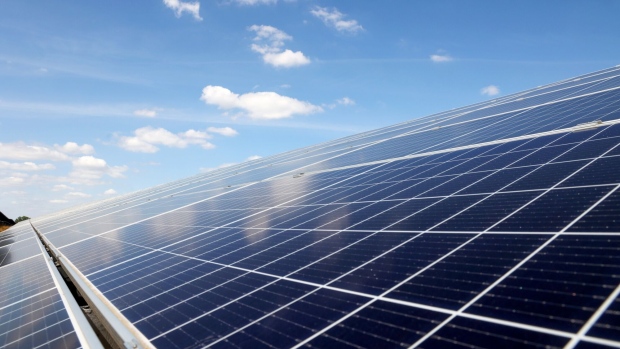May 30, 2023
Europe Gas Drops Again as Industries Struggle, Solar Hits Record
, Bloomberg News

(Bloomberg) -- European natural gas rose as traders assessed the impact on demand from record German solar output while new outages were announced at a Norwegian facility.
Benchmark futures settled 0.5% higher, after swinging between gains and losses. Short-term supply and demand are being scrutinized for any signs of stress, even though overall risk has sharply reduced with fuller-than-normal stockpiles. The Kollsnes gas processing plant in Norway will have outages this week and the Montoir LNG import facility in France is scheduled for a shutdown.
The market is also being impacted by German solar power generation reaching unprecedented levels over the weekend, and expected to remain high this week. That is likely to hit gas demand for power at a time when industrial use is already muted. Traders will have to increasingly adjust for more clean-power output as Europe boosts capacity in an effort to reduce its gas dependence following Russia’s invasion of Ukraine.
Lower nuclear output in France was also providing some bullishness to near-term gas prices, analysts at Inspired Energy said in a note. The country’s reactors were operating at 57% of capacity on Tuesday, down from 59% on Friday. Electricity de France SA also delayed the start of the Cruas-4 reactor to June 3.
Dutch gas for June delivery, Europe’s benchmark, expired after settling at €24.68 per megawatt-hour. The July contract added 1%. UK gas for June rose 1.6%.
Reduced Risks
Still, gas is down more than 65% this year, and there’s little indication the slide will end soon as industries continue to struggle amid a weak economic environment. Stockpiles are filling quickly and are likely to be fully replenished much earlier than usual. It would reduce much of the supply risks for the next winter, providing further bearish pressure on prices.
Also read: Gas Price Plunge Brings Relief to Europe After Energy Panic
Further pressures are coming from solar, with record capacity additions last year in Europe. Power generation using the technology in the first four months of this year was 11% higher compared with the same period last year, while solar contributed a record-high share of total electricity output, said Sarah Brown, Europe program lead at energy think tank Ember.
Much of the European Union’s rise in solar installations is to “move away from costly fossil fuels at a faster rate and avoid further exposure to the energy price hikes and security threats that occurred over the last 18 to 24 months,” she said.
The surge in solar power availability mean some utilities are paying for users to take the supply. Many units in Europe can’t be quickly switched off when prices make generating unprofitable. Others pull in subsidies of hundreds of pounds per megawatt-hour, so can still sometimes be profitable when prices turn negative.
At the sunniest points on Sunday, intraday power prices dropped as low as -€1,129.96 in Germany and -€429.84 in the Netherlands. The prices come as a warning to utilities and grid operators that more flexible systems are needed to stabilize the market, like batteries to adjust the time of supply and automation to shift power demand to different times of day.
--With assistance from Todd Gillespie and Anna Shiryaevskaya.
©2023 Bloomberg L.P.





